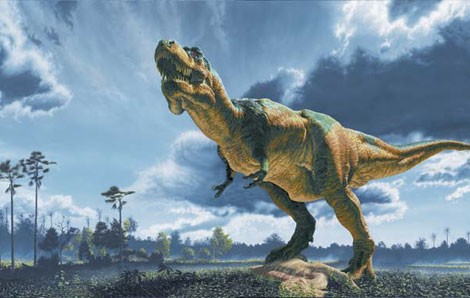 Dinosaurs are not out of fashion… nor are they in hibernation. What, in my opinion, happens is that there have been fewer actions of scientific and pedagogical quality aimed at the general public and a smaller number of interested parties talking about them in the media. On the contrary, in the modesty of scientific research there has never been so much production among us and that makes me very happy.
Dinosaurs are not out of fashion… nor are they in hibernation. What, in my opinion, happens is that there have been fewer actions of scientific and pedagogical quality aimed at the general public and a smaller number of interested parties talking about them in the media. On the contrary, in the modesty of scientific research there has never been so much production among us and that makes me very happy.
Without false modesty, I must say that the seed I helped to sow to the ground, not as an expert (who everyone knows I never was and am) but as a promoter through the written and spoken word and as responsible for more than a dozen major exhibitions carried out at the National Museum of Natural History and other institutions, it germinated and is today a “tree” bearing fruit.
Despite the traditional scarcity of funding, we have never had so many people working full time on dinosaur paleontology and paleobiology. Never, as in recent years, have we conducted or participated in so many excavations at home and abroad. This topic has never been published so much.
In the continuation of a line we started in 1992, with “Dinosaurs return in Lisbon“, will take place next October, at the Pavilion of Knowledge, of the Ciência Viva Agency, in this city, in which I am involved, an exhibition about the famous Tyrannosaurus rex, in which it is discussed whether this large carnivore was a scavenger or an active predator, supported by the scientific knowledge of professionals in the fields of geology and paleontology.
What is actually in hibernation is the political will of those responsible for the central and local administrations to carry out, complete or provide assistance in the maintenance or completion of important projects that I have given them, some of them more than twenty years ago. years old.
These are, in particular, the cases of the following deposits:
• "caught long” from the Upper Cretaceous, about 95 million years old, near Carenque, with an architectural project approved by the Municipality of Sintra, in 2001, completely left to neglect;
• "Avelino Quarry","Mua Stone"and "lobstermen", the first two with footprints of herbivores (sauropods) from the Jurassic, about 150 million years old, and the last one from the Lower Cretaceous, about 120 million years old, whose projects are still lost in one or more drawers of the municipality of Sesimbra;
• "Chicken Quarry“, with footprints of herbivores from the Middle Jurassic, about 175 million years old, the only one to be visited, whose musealization has not been completed and which, due to lack of maintenance, is in a state of worrying degradation;
•”Valley of Means” (Alcanede, Santarém), an important deposit with footprints of theropods (carnivores) from the middle Jurassic, about 175 million years old, waiting for better days.
The high scientific value, the corresponding pedagogical interest and the monumentality of these deposits justify the investment that can be made in them (something insignificant compared to what has already been done), in the certainty that their potential tourist interest will amply compensate.
If negligence on the part of the administrations, “in times of fat cows”, was what is in sight, it is not difficult to imagine the fate of this invaluable Natural Heritage, nowadays.
Author Antonio Galopim de Carvalho
Science in the Regional Press – Ciência Viva


















Comments